The popular Irish retailer Primark has announced plans to open its second store in Prague.
The new location will be at the Metropol Zličín shopping center, situated next to the Zličín metro station. The news was confirmed in a company press release.
The new store will cover an area of 2,800 square meters and is set to open in winter 2024, although the exact date has not been disclosed. This expansion will create 140 new jobs.
This will be Primark’s third physical store in the Czech Republic. The first store opened in the summer of 2021 on Wenceslas Square, within the Flow Building shopping and office center.
The second store followed in autumn 2022 in Brno, which also drew a large number of excited shoppers.
Despite the company’s growth in locations, Primark’s financial report for the last fiscal year, ending on August 31, 2023, revealed a loss of 4.2 million crowns. This is a notable decline compared to the previous year’s profit of 80.8 million crowns.
However, the company’s revenue increased by 62 percent year-on-year, reaching 1.65 billion crowns.
Primark attributed the drop in profit to rising costs in materials, logistics, and payroll, which the company chose not to pass on to customers despite inflationary pressures.
Currently, the company operates 432 stores across 16 countries, with plans for further expansion.
Would you like us to write about your business? Find out more
Prague city officials are thinking about raising prices for both parking and public transportation. This is part of a bigger plan to deal with traffic jams and invest in the city’s transportation system.
Adam Scheinherr (Praha Sobě), said it’s important to update parking fees as they haven’t changed in years. “If we raise prices by 3-5%, it might free up 3-5% of parking spaces,” Scheinherr explained.
He added that the extra money wouldn’t just help traffic flow better, it would also be put back into fixing roads and improving public transportation.
Jiří Pospíšil (TOP 09), agrees that something needs to be done about the worsening traffic situation. However, he stressed that any changes to parking fees should favor residents over visitors, especially those coming for fun.
Pospíšil suggested that visitors who aren’t residents use park-and-ride facilities and public transport to get to the city center. This would reduce the number of cars in Prague.
Discussions also involve public transport fares, which haven’t kept up with rising costs like inflation. Scheinherr pointed out that annual public transport tickets are actually cheaper now than they were twenty years ago, even though energy costs and employee salaries have gone up.
Without adjustments, the city would need to spend more money from its budget. Currently, the city pays for a whopping 86% of the transport budget. Pospíšil and his colleagues want to reduce this subsidy to 75% to make the system sustainable in the long run.
Zdeněk Hřib, Prague’s Deputy Mayor for Transport acknowledged the financial challenges.
“Running a city is a team effort,” he said, underlining the importance of working together within the coalition government. He assured residents that any fare increases would be thought about carefully to minimize the impact, especially given the current economic pressures.
Would you like us to write about your business? Find out more
The town of Žatec, in the Ústí nad Labem Region, has been named Czech “Historical Town of the Year” for 2024.
The award, which comes with a one-million-crown cheque, honors those towns and cities that have excelled in preserving and renewing their cultural and architectural heritage.
The “Historic Town of the Year” competition is organized annually by the Association of Historic Settlements in Bohemia, Moravia, and Silesia along with the Ministry of Regional Development.
Last year, Žatec and the surrounding hop-growing landscape were granted UNESCO World Heritage status, becoming the 17th Czech entry on the list.
The town showcases a unique hop-growing legacy that exists nowhere else in the world: besides the historical center, hop stores, and old drying and packing plants, Žatec also has a number of other heritage sites with industrial architecture. It even has the smallest hop garden in the world!
Hops have been grown around Žatec for some 700 years now and during that time a unique landscape has been shaped with this in mind; the very best varieties originated here and people built towns literally designed around the hop processing industry.

Throughout Žatec there are several interesting places and heritage sites in the history of which hops have played or still play the starring role.
These include the Hop and Beer Temple, an entertaining and educational attraction that showcases the tradition of this world-famous hop region.

And if you fancy getting a bird’s-eye view of the town, you can go up the Hop Lighthouse, a unique viewing tower. It is also worth seeing the Hop Astronomical Clock, a clock face featuring the twelve signs of the zodiac and portraying the hop year.
Another attraction worth checking out is the unique Renaissance malt house with its malting exhibition and gallery, and don’t miss the Hop Museum, which boasts the biggest hop exhibition in the world.
Would you like us to write about your business? Find out more
Instead of the statue of Marshal Koněv, an interactive memorial will be created to honor the courage of those who participated in the Prague Uprising.
The winning proposal recalls the first moments of the 1945 uprising. The work arose from an art-architecture competition organized by Czechdesign.
The main architect, Bronislav Stratil, and sculptor Jakub Berdych Karpelis collaborated on the project, along with landscape architect Lucie Miovská.
The monument includes a walkable green roof and an interactive point featuring a trumpeter with a golden talking head, embodying freedom of expression.
The park space will offer cultural activities and serve as a reminder of the Prague Uprising, connecting with nearby parks.
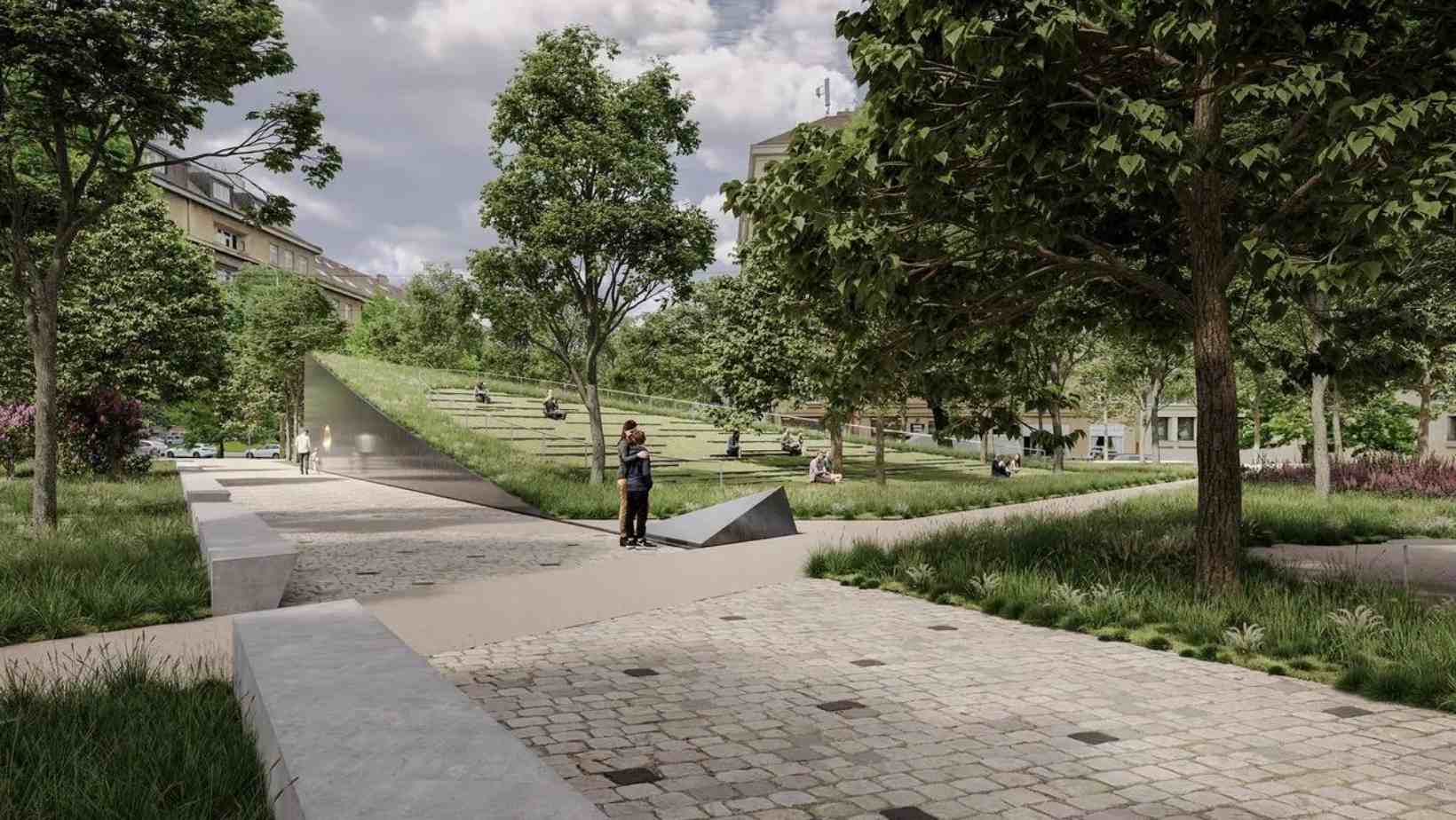
Mayor Jakub Starek lauds the competition’s quality, emphasizing its importance in maintaining public space.
“The monument is primarily intended to be a reminder of the courage with which civil society was willing to stand up to evil. Symbolically, it should pay tribute to thousands of often nameless fighting men and women, who were often non-soldiers,” he said to Prague Morning.
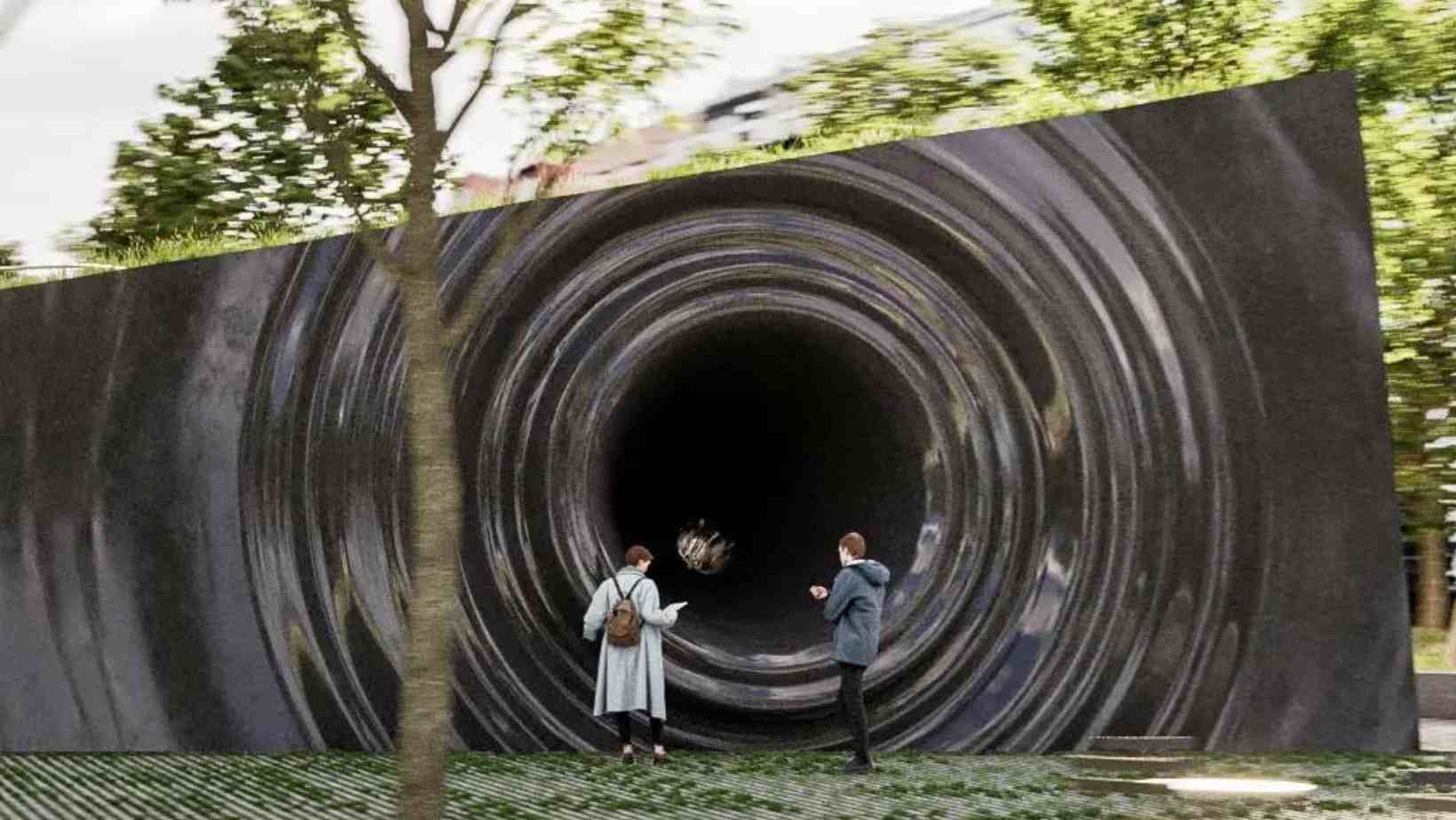
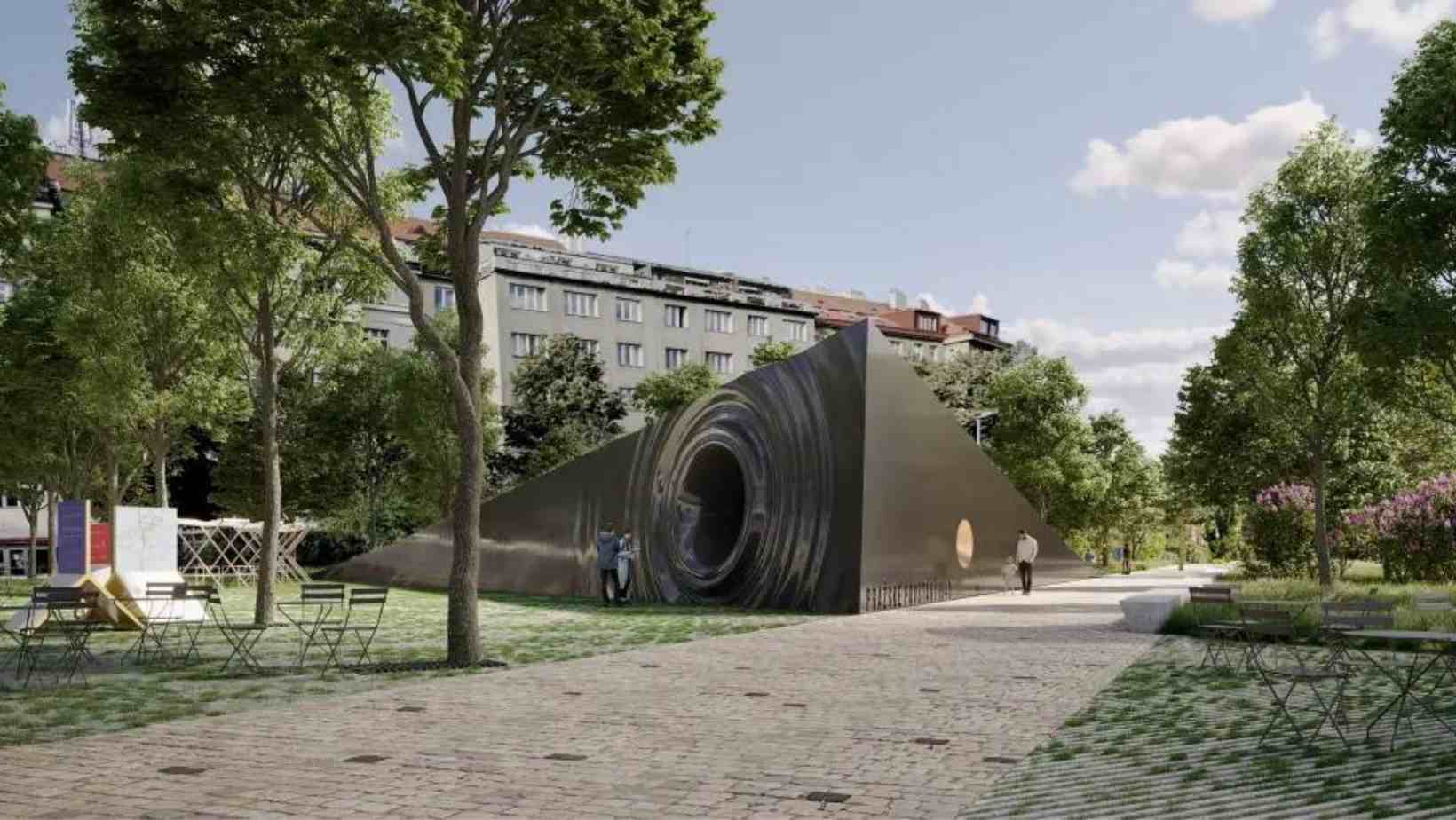
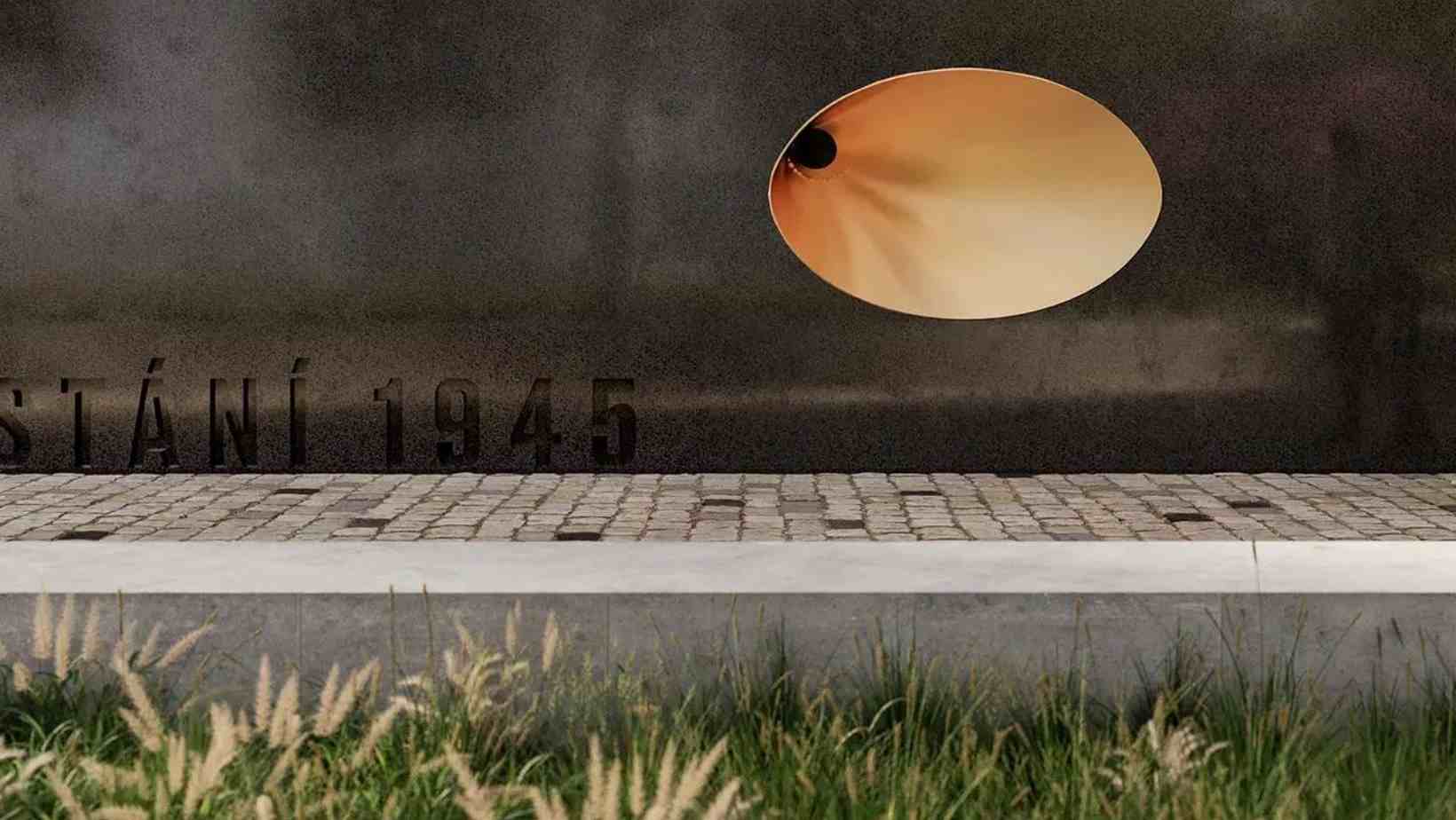
The Prague Uprising
The Prague uprising (Pražské povstání) was a partially successful attempt by the Czech resistance movement to liberate the city of Prague from German occupation in May 1945, during the end of World War II.
On 5 May 1945, during the end of World War II in Europe, occupying German forces in Bohemia and Moravia were spontaneously attacked by civilians in an uprising, with Czech resistance leaders emerging from hiding to join them.
The Russian Liberation Army (ROA), a collaborationist formation of ethnic Russians, defected and supported the insurgents. German forces counter-attacked, but their progress was slowed by barricades constructed by the insurgents.
On 8 May, the Czech and German leaders signed a ceasefire allowing all German forces to withdraw from the city, but some Waffen-SS troops refused to obey. Fighting continued until 9 May, when the Red Army entered the nearly liberated city.
Would you like us to write about your business? Find out more
A celebration of Czech brewing history is coming to Prague!
On Saturday, April 27th, the Břevnov Monastery will host a festival featuring a selection of fresh draught beers from five renowned Czech monastery breweries.
Visitors can expect a delightful tasting experience, sampling brews from Klášterní pivovar Strahov, Vorkloster (Klášterní pivovar Porta Coeli), Klášterní pivovar Ossegg, Klášterní pivovar Želiv, and the host brewery, Břevnovský klášterní pivovar sv. Vojtěcha.
A special treat awaits beer enthusiasts: a unique collaborative brew created by the festival participants alongside leading specialists from Pilsner Urquell. Free entry.
About the Břevnov Monastery
The monastery at Břevnov, the first friary in Bohemia, was established by Boleslav II and St. Vojtěch on the 14th of January 993. A legend describes the origin of the monastery’s name according to a beam (břevno in Czech) lying in the fountain at which Boleslav II and St. Vojtěch met.
The monastery was rebuilt by Břetislav I around the year 1040, and then again in early-Gothic style in the time of abbot Bavor of Nečtiny around 1300. It was plundered by the Hussites and then again during the Thirty Years War. Today’s Baroque complex was realized gradually in the years 1708 – 1745 according to a project of Kryštof Dientzenhofer and his son Kilián Ignác.
The temple was built in 1708 – 1735 according to a project of Kryštof Dientzenhofer and Kilián Ignác Dientzenhofer. It is a demonstration of Bohemian high-Baroque building construction.
There is an extensive garden adjoining the monastery, where the abbot’s summer house named Vojtěška is located, with a chapel above the fountain (the start of the Brusnice Stream), where the monastery was founded.
After the friars were expelled, the object was used by the Ministry of Interior and by the National Central Archive as a depository; after 1990, the property was returned to the Benedictine Order. In 1991 it was declared a National Cultural Monument.
Would you like us to write about your business? Find out more
The new tourist season officially gets underway in Czechia on Thursday, with castles, chateaux, and other national monuments administered by the National Heritage Institute opening their doors to the public.
Most of the privately owned monuments that still belong to their original aristocratic owners also open ahead of the Easter holidays.
Visitors can expect a combination of familiar favorites and exciting new offerings, including extended opening hours, newly accessible areas, and special Easter programs at some locations.
However, be prepared for slightly higher entrance fees at many state-run castles and chateaus this year.
Increased Costs Lead to Ticket Price Adjustments
The National Heritage Institute (NPÚ) has implemented price hikes ranging from CZK 20 to CZK 60 at some monuments. This decision reflects rising operational costs and reduced funding from the Ministry of Culture.
The good news? Entrance fees remain unchanged at roughly a quarter of the monuments. Additionally, 100 NPÚ-managed sites will be open daily throughout the Easter holidays, with some offering special themed events.
Further enhancements are underway at Český Krumlov State Castle and Chateau, with the fully restored Bellarie Summer Palace opening on a new visitor route starting in September. The Golden Crown Monastery will also unveil its Baroque pharmacy to the public.
Following in the Footsteps of Royalty
History buffs can delve into the Habsburg legacy through a new project titled “Following the footsteps of noble families.” This initiative explores how the Habsburg dynasty adapted Bohemian and Moravian residences to their preferences from the 18th to the 20th centuries.
Konopiště, Ploskovice, and Zákupy castles will be central to this project, accompanied by special exhibitions and lectures.
Tourism on the Rise
The Czech Republic’s castles and chateaus continue to be popular tourist destinations.
In 2022, some 4.2 million visited Czechia’s chateau and castles. However, the number is still short of the pre-Covid season of 2019, which saw over 5,000 visitors. Sites open year-round experienced a 17% rise in tourism during the first two months of 2024 compared to the same period in 2023.
Would you like us to write about your business? Find out more
The highly-anticipated PASTRAMI POP-UP Vol. II is returning to Prague’s Holešovice Market Hall on Thursday, April 25th, 2024, from 11:00 AM to 10:00 PM.
This one-day street food festival is a haven for food enthusiasts, offering an array of pastrami dishes alongside tempting vegetarian options.
Pastrami is a sandwich prepared from beef, most commonly beef brisket. The meat is marinated for several days in a salt solution and a secret spice blend. It is then smoked, boiled, and thinly sliced.
This year’s PASTRAMI POP-UP Vol. II promises an even wider variety of culinary delights. Returning vendors include crowd favorites like Take Eat EZ, Big Smokers, Meat Vandals, and MOVE bar.
Joining the party are newcomers like MK’s BBQ Truck and the renowned Bistro Čejka, a family-run butcher shop with over a century of tradition.
But wait, there’s more! The organizers understand that not everyone craves meat.
This year’s event features mouthwatering vegetarian options that don’t compromise on flavor. Think focaccia stuffed with roasted eggplant, creamy vegan mayonnaise, avocado, and fresh greens, or a variant with roasted peppers and truffle mayonnaise.
To complete the experience, PASTRAMI POP-UP Vol. II boasts a live music program.
The lunchtime session will be led by Ivo Pospíšil, also known as Tea Jay Ivo, a renowned DJ and music aficionado specializing in tunes from the 50s to 70s. In the evening, DJ Gadjo will take over, spinning a vibrant mix of Latin jazz, funk, soul, and Afrobeat.
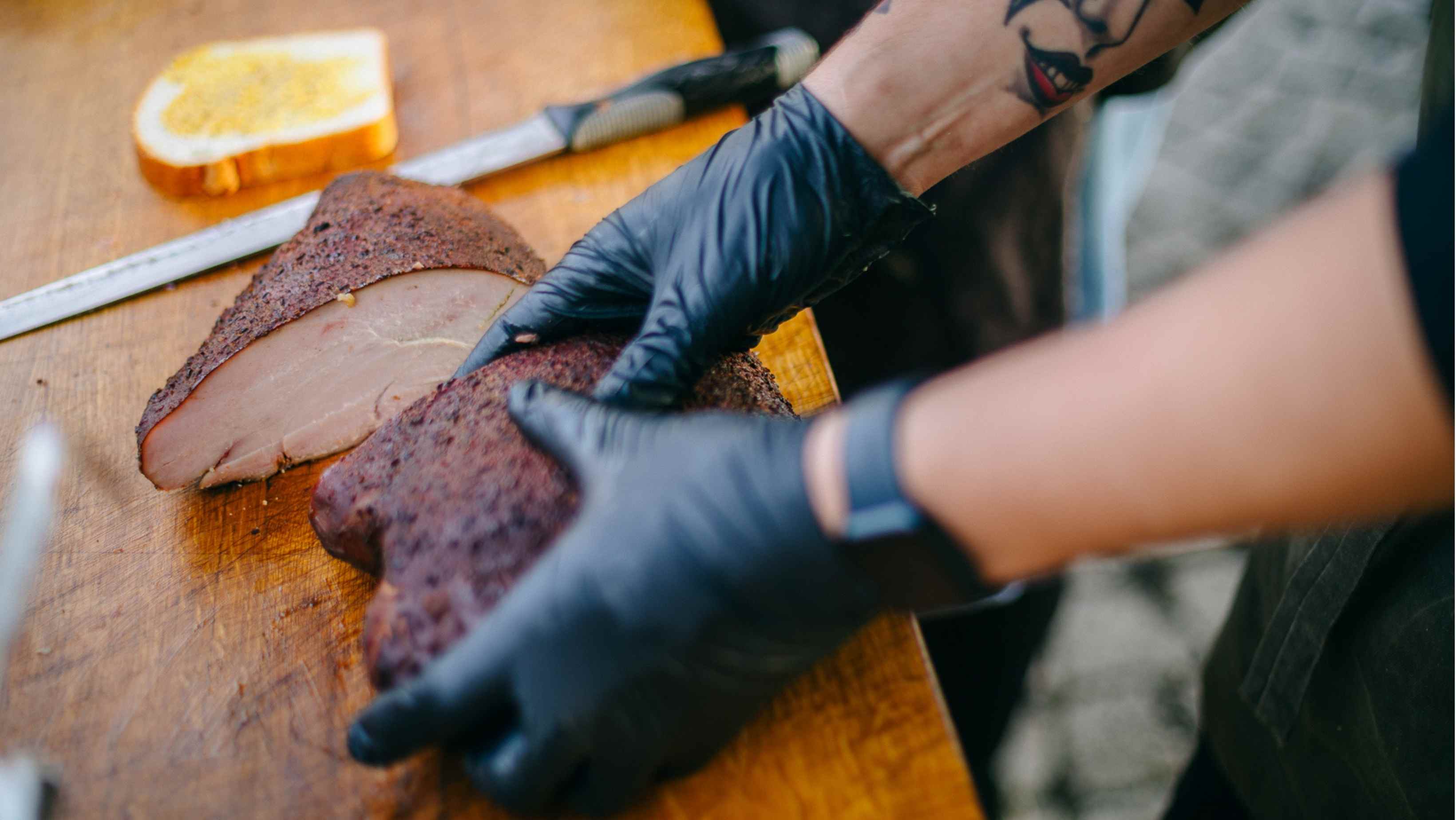
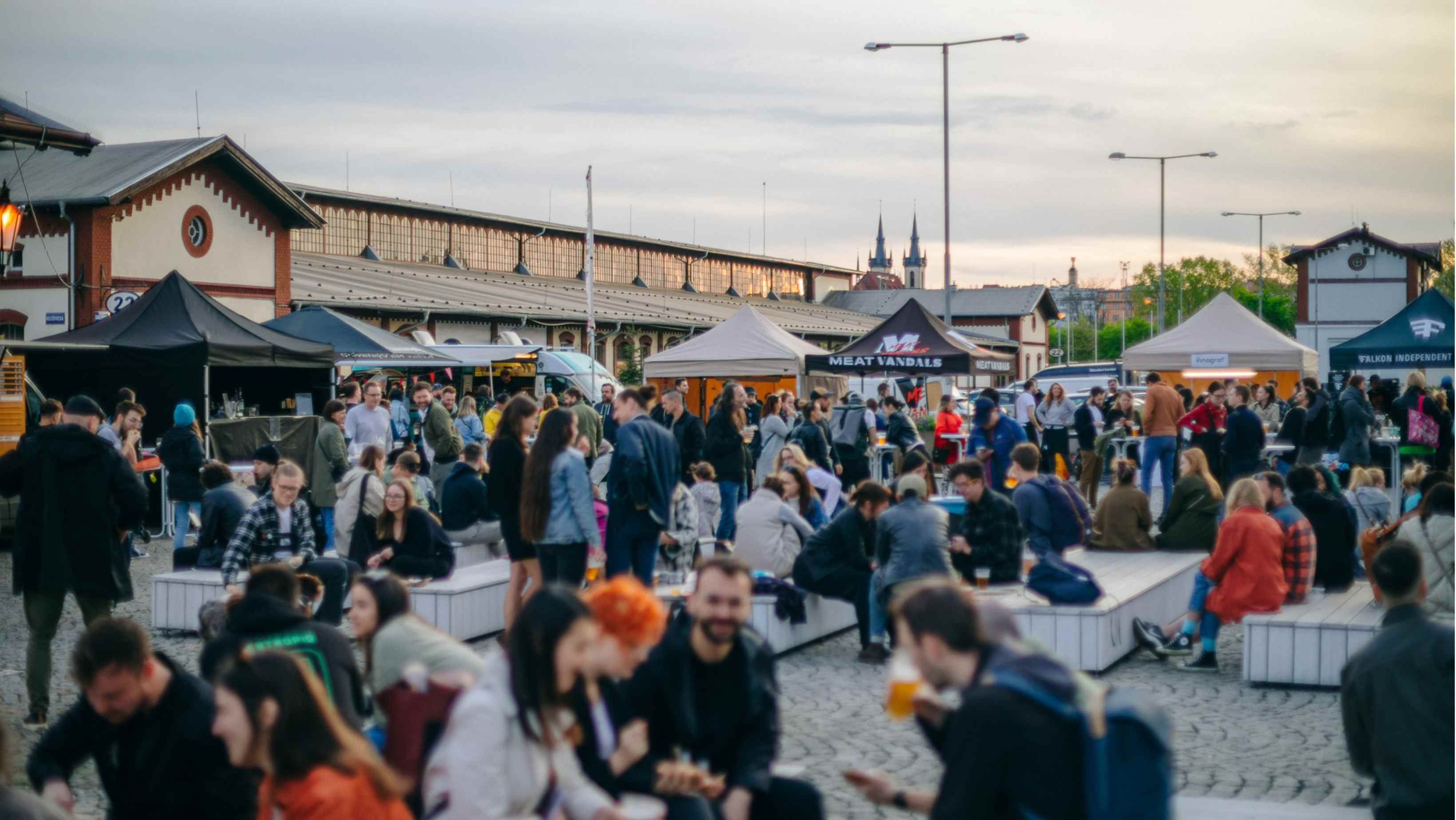
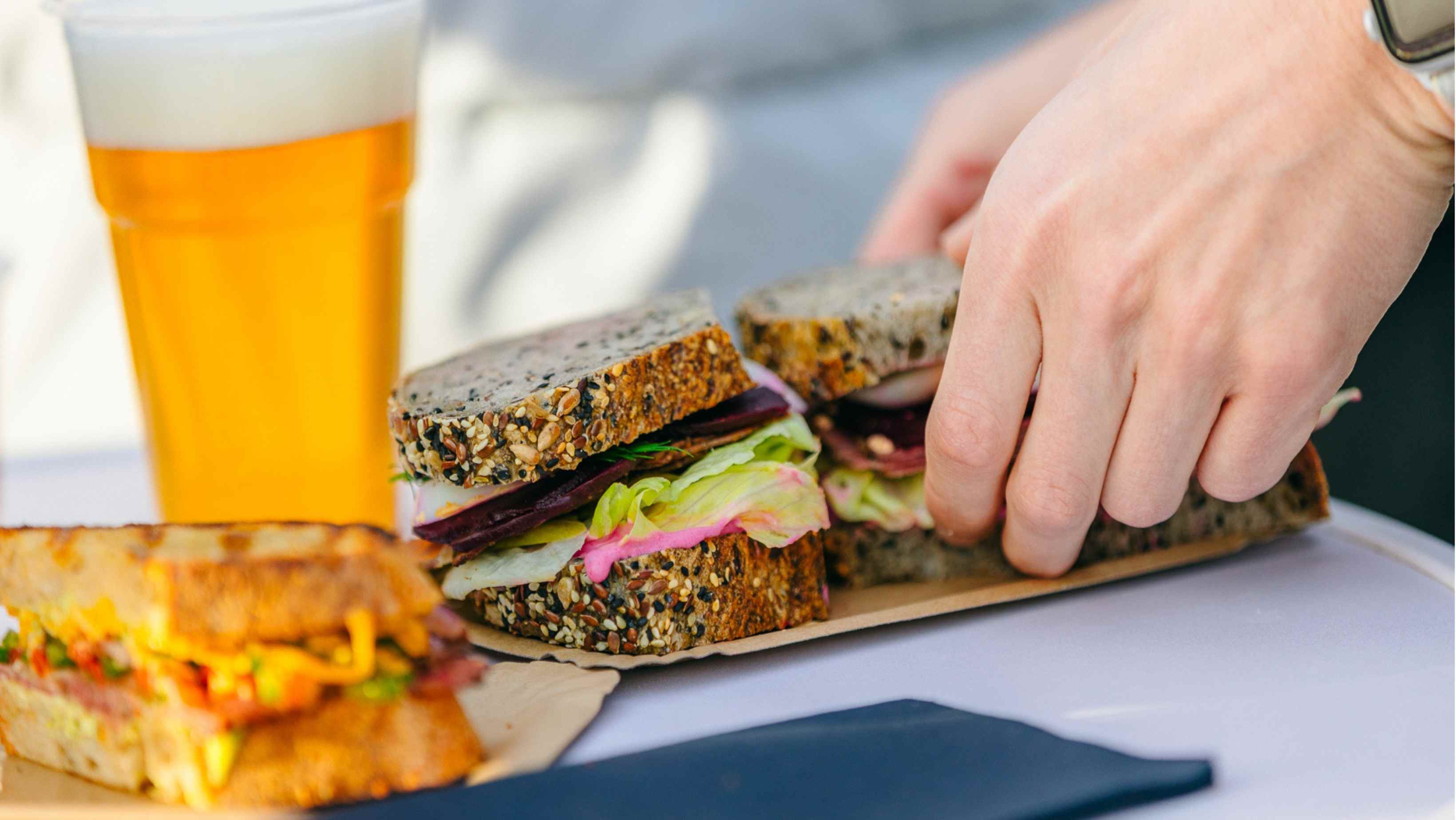
Avalanches in Kyrgyzstan’s northern district of Ak-Suu killed three Czech citizens over the weekend, Stalbek Usubakunov, a spokesman for the Issyk-Kul regional police department said.
According to Usubakunov, 19 other Czechs survived the avalanches on February 25.
The bodies of the deceased were recovered and brought to a morgue in the city of Karakol. Authorities have not yet publicly released information about the identities of the victims.
Avalanches in the mountainous area of Kyrgyzstan occur very often in late winter and spring.
Czech foreign ministry spokeswoman Mariana Wernerova told AFP that three of the dead skiers were Czech nationals. “We can confirm that three Czech citizens have died in an avalanche on the border between Kyrgyzstan and Kazakhstan,” she said.
Czech diplomats in the Kazakh capital Astana “are in touch with local authorities and the travel agency,” Wernerova added.
Slovak foreign ministry spokeswoman Beatrice Szaboova said the fourth victim was Slovak.
“Our embassy in Astana is following the case and… providing consular assistance,” she told AFP.
A former Soviet country, Kyrgyzstan has for years been trying to invest in its still underdeveloped tourism sector, particularly in winter sports.
It recently eased visa restrictions in a bid to attract more foreign tourists, many of whom come for its vast and towering mountain ranges that reach some 7,000 metres in altitude.
The economist Jiří Pour from UniCredit Bank, has highlighted a concerning trend in the Czech Republic’s gas imports, with Russian gas now representing the majority of deliveries, Novinky.cz writes.
Despite efforts to reduce reliance on Russian imports throughout last year, the statistics have shifted dramatically since November.
Data from NET4GAS indicates a sharp increase in Russian gas imports, particularly through the Lanžhot station from Slovakia, the only entry point for Russian gas into the Czech Republic.
This surge is confirmed by the Czech Statistical Office’s foreign trade statistics for December, revealing a substantial rise in the share of Russian gas in total imports, reaching 58 percent.
Supplies of Russian gas grew to 5.19 billion crowns in December – more than supplies from Norway – from 1.9 billion crowns in November, 700 million in October and much smaller amounts in previous months, CSU data showed.
Mr. Pour points out that while there is speculation about stored gas in Ukrainian reservoirs being imported into the Czech Republic, transit or resale of Russian gas to other countries is unlikely to distort the statistics significantly.
The vast majority of imported gas remains in the Czech Republic, with only a small percentage being exported.
Moreover, recent trends suggest that the reliance on Russian gas is intensifying, with January’s imports showing a further increase to nearly 62 percent of total imports.
This heightened dependency has economic implications, contributing significantly to Russia’s balance of payments.
The Czech Industry and Trade Ministry said on Wednesday that the flows were the result of a gas glut in central Europe due to warm weather.
“This is a development given by the market situation which does not change anything of the fact that we are independent from supplies from Russia,” the ministry said in emailed answer to Reuters questions.
The Prague Transport Company (DPP) plans to launch a competition with an estimated value of 86 billion crowns to automate traffic on the C metro line along with the purchase of automatic trains for the under-construction D line.
City councilors approved the move, with representatives yet to vote.
The contract will include the purchase of 52 automatic sets for Line C, 16 sets for Line D, and necessary modifications and necessary station modifications.
Deputy mayor Zdeněk Hřib (Piráti) emphasized the urgency of announcing the tender promptly due to the testing and homologation needs of the trains. The city aims to select a winner within approximately two years.
“Automation will reduce the interval to 90 seconds, significantly boosting the capacity of the C line,” added the deputy. For line D, currently under construction, automated operation is planned from the outset.
Preparatory work and car development will occur in 2026 and 2027, followed by the production, certification, and homologation of the first cars between 2027 and 2028. A test run is expected between 2028 and 2029, paving the way for serial production and the delivery of the ordered trains.
The primary motivation for automating the C line lies in its high workload, particularly in central sections from Nádraží Holešovice to Vyšehrad, where capacity is stretched to the limit. Without automation, reducing intervals, currently at around 115 seconds during peak times, would be unfeasible.
The construction of the new D Line is divided into four phases or sections, the first of which is the section I.D1a (Pankrac – Olbrachtova), followed by I.D1b (Olbrachtova – Nové Dvory) with the construction of three stations and interstation tunnels, I.D3 (Namesti Bratří Sinku – Namesti Miru), and I.D2 with three stations and the depot in Písnice.
Perhaps spiders are not a nuisance after all — at least that’s the case for Adam Sandler in “Spaceman,” in which he receives emotional support from an oversized arachnid in outer space.
Netflix has released the trailer for Sandler’s upcoming sci-fi film, set to premiere at Berlin Film Festival next month. It will then release in select theaters on Feb. 23 and on the streamer March 1.
Directed by Johan Renck, who helmed the HBO miniseries “Chernobyl,” the film is based on the 2017 novel “Spaceman of Bohemia” (Kosmonaut z Čech) by Czech author Jaroslav Kalfař.
The film’s description reads, “Six months into a solitary research mission to the edge of the solar system, an astronaut, Jakub (Adam Sandler), realizes that the marriage he left behind might not be waiting for him when he returns to Earth.
Desperate to fix things with his wife, Lenka (Carey Mulligan), he is helped by a mysterious creature from the beginning of time he finds hiding in the bowels of his ship. Hanuš (voiced by Paul Dano) works with Jakub to make sense of what went wrong before it is too late.”
The trailer reveals that Sandler’s Jakub is 189 days into his solo space mission and struggling to cope with his isolation. When he meets Dano’s giant spider-like creature, Jakub says, “I’m losing my mind.”
“I wish to assist you in your emotional distress,” the talking spider tells Jakub.
In Prague, Spaceman shot at locations including the Desfours Palace by the Florentinum business complex, the Zelený Pruh swimming pool, Prague Congress Center, and areas in Radotín.
Outside of Prague, Spaceman also shot at locations in Marianské Lázně, Černošice, Bystřice, Slapy, Jetřichovice, Bernartice, the Branov campsit
In addition to Sandler, Dano and Mulligan, the cast features Kunal Nayyar, Lena Olin and Isabella Rossellini.
The script for “Spaceman” was penned by Colby Day. Producers include Channing Tatum, Reid Carolin, Peter Kiernan, Michael Parets, Tim Headington, Lia Buman and Max Silva. Executive producers are Ben Ormand, Johan Renck and Barry Bernardi.
On Tuesday, 9 January, Prague police unveiled a new video showing the coordinated efforts of law enforcement and special forces during the shooting at the Faculty of Philosophy of Charles University. The footage provides a detailed account of the officers’ actions.
The video captures the moment police entered the building, searching room by room in their pursuit of the shooter. Timely timestamps accompany the footage, enhancing viewers’ comprehension of the law enforcement’s strategies.
In addition to the building search, the video reveals the scene of the shooter’s lifeless body.
The sharpshooters strategically positioned themselves in a nearby hotel, aligning with the shooter’s elevation.
From this vantage point, they patiently awaited his approach to the gallery. When one of the sharpshooters aimed at him, the assailant initially seemed to surrender by dropping his weapon and raising his hands. However, he retrieved his weapon and took his own life.
The tragic incident took place on the afternoon of 21 December at Charles University. The toll stands at 14 lives lost and 25 injured.
Addressing concerns, the Office of Internal Control of the Police Presidium of the Czech Republic announced on Tuesday that their investigation found no faults in the police actions.
Michal Tikovski, the department director, emphasized that the police’s professional intervention, coupled with a flawless evacuation procedure, adhered to established protocols in responding to a shooter attack.

